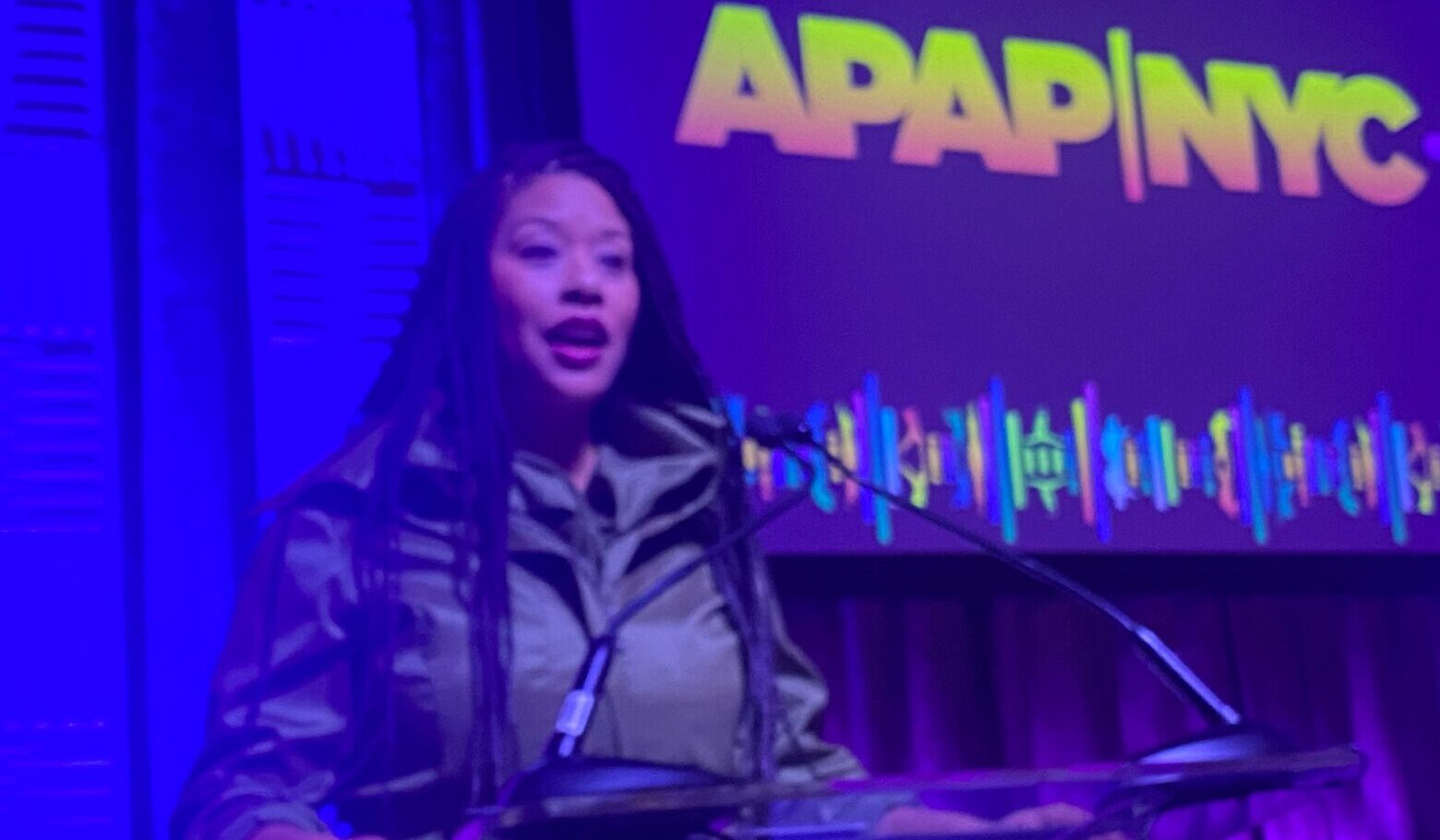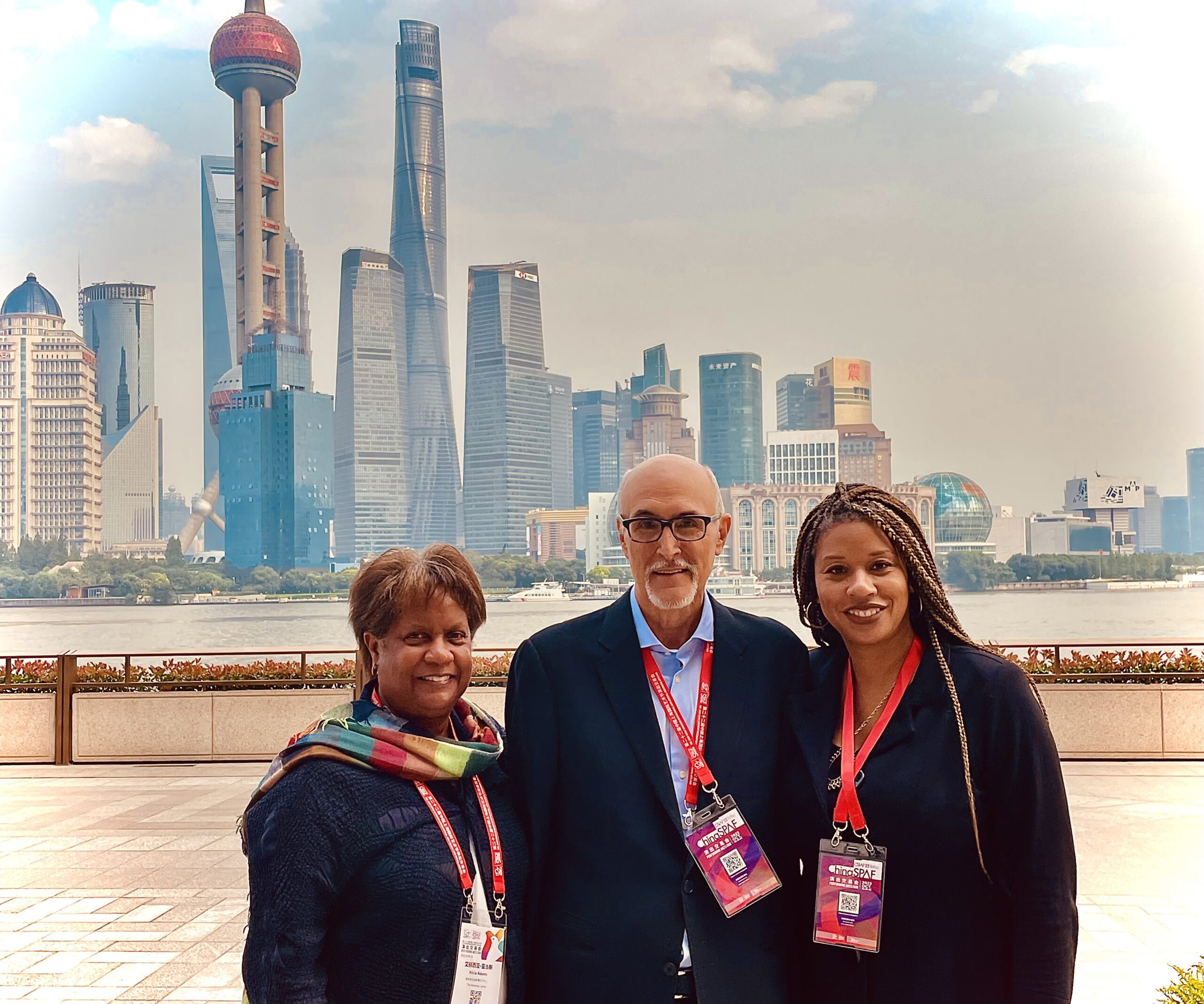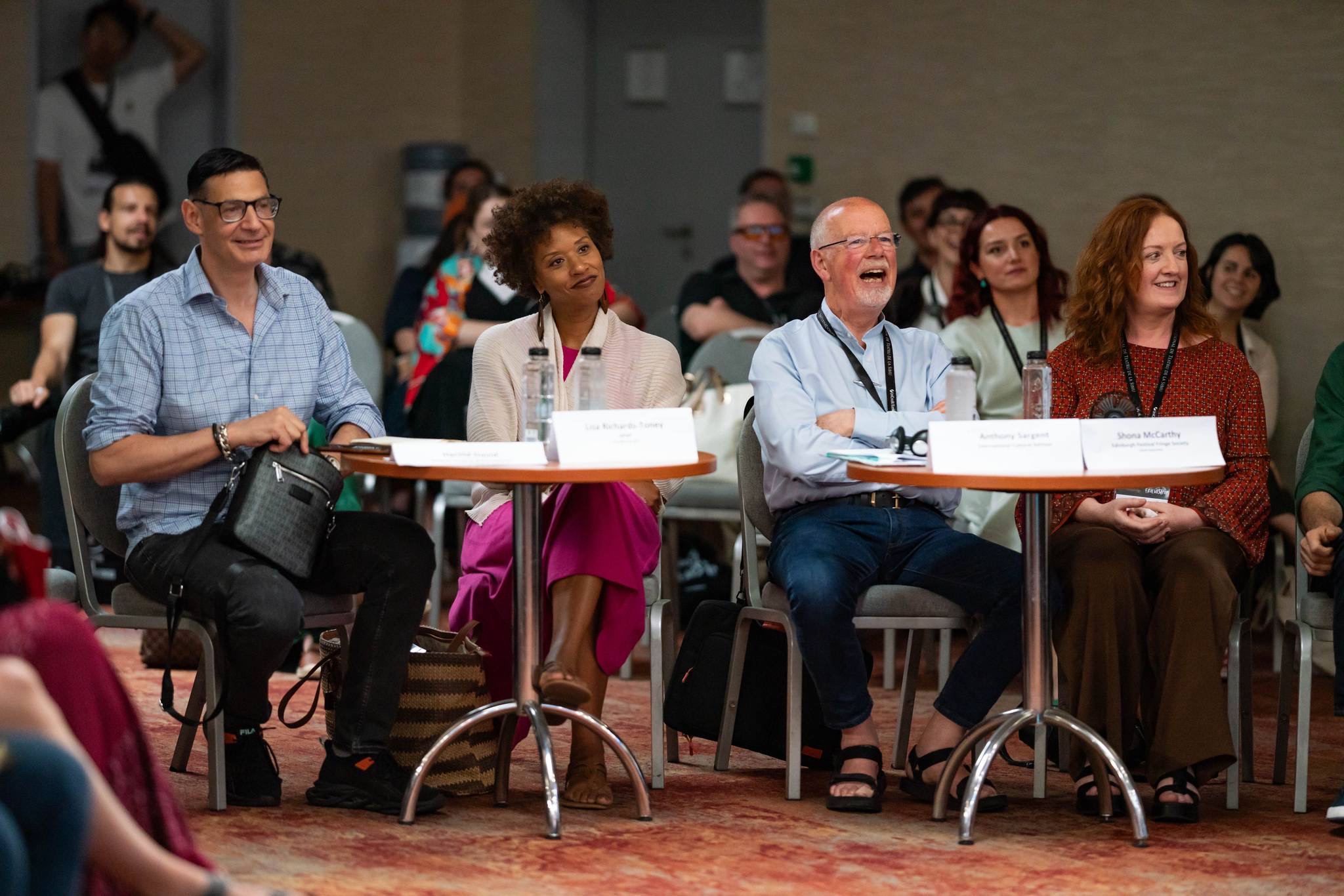Interview with Lisa Richards-Toney, President and CEO of APAP

Anna Robb, CEO of StageLync recently caught up with Lisa Richards-Toney, President and CEO of APAP on the StageLync Podcast. The podcast will be out soon, but in the meantime, here are some highlights of their conversation.
Anna Robb: Lisa, thank you for joining us. To begin, could you explain what APAP is and its role in the performing arts industry?
Lisa Richards-Toney: Absolutely. APAP stands for the Association of Performing Arts Professionals. We are the leading membership organization in North America for professionals working in the presenting, booking, and touring industry. Our members include presenters, agents, managers, and artists who work together to make live performances happen.
Our work centers around fostering connections, providing professional development, and supporting the business needs of our members. One of our cornerstone events is our annual conference, which brings together thousands of professionals to network, showcase work, and close deals. It’s a pivotal moment in the arts calendar where the industry comes together to learn, collaborate, and prepare for the year ahead.
AR: You took on leadership at APAP during the height of the pandemic in 2020. What was your immediate focus when you stepped into the role?
LRT: My immediate focus was visibility. The pandemic was a time of great uncertainty for our members, and APAP needed to be a visible and reliable source of support. I also had to make some difficult decisions early on, including cutting our budget significantly, which meant restructuring the organization. Those were challenging choices, but they were necessary to stabilize APAP for the long term.
Beyond that, I focused on identifying the core needs of our members during the crisis. We quickly transitioned to hosting a virtual conference, one of the first of its kind in our field, to ensure that our members could still connect, learn, and do business. It was a significant adjustment, but it allowed us to remain responsive and relevant during a time when traditional models were no longer viable.

AR: How did you approach leading your team through such a turbulent period?
LTR: During the pandemic, we were fully remote, and communication became more important than ever. I made it a priority to check in regularly with my team—not just about work, but about how they were doing personally. We held frequent team meetings, not always with formal agendas, but simply to maintain connection and ensure everyone felt supported.
I also worked hard to foster a sense of purpose and possibility during a very difficult time. Even though the situation was challenging, I encouraged the team to see it as an opportunity to create something new and impactful. We focused on building trust, recognizing each other’s contributions, and celebrating small wins, which helped maintain morale.
AR: How has the performing arts landscape evolved since the pandemic?
LTR: The pandemic has brought about significant changes in the performing arts sector. One major shift is the movement of professionals within the field. Many people have changed roles, and some are entirely new to presenting and booking. This has created a need for foundational training and resources to help people succeed in these roles.
There’s also been a shift in funding. Foundations are increasingly prioritizing support for individual artists and technology-driven projects, which has left many organizations, including service organizations like APAP, navigating a new funding landscape. These changes require us to rethink how we sustain ourselves and support the broader arts community.
On a positive note, the pandemic highlighted the importance of equity, inclusion, and community engagement. While these conversations started gaining traction during the pandemic, the return to business has, in some cases, shifted the focus back to financial recovery. However, it’s critical that we continue to prioritize these values and ensure they remain at the forefront of our work.
AR: What are the key challenges facing the performing arts industry today?
LTR: One of the biggest challenges is workforce sustainability. The performing arts have historically been underfunded, and many professionals struggle to earn a living wage. It’s essential that we address issues like compensation, work culture, and career pathways to make the field more accessible and sustainable.
Another challenge is rebuilding relationships with audiences. The pandemic disrupted traditional patterns of engagement, and now we have to find new ways to bring people back into theaters and performance spaces. This involves rethinking programming, accessibility, and how we communicate the value of the arts to the public.
Finally, there’s the ongoing need for advocacy. The arts are often undervalued at the national level, but they play a critical role in fostering empathy, cultural understanding, and community building. We need to continue making the case for why the arts matter and ensuring that they receive the support they deserve.

AR: What do you think is the most rewarding aspect of your role at APAP?
LTR: What I love most is that no two days are the same. The dynamic nature of this work keeps me engaged and constantly learning. I also enjoy working with my team and seeing them succeed, as well as having the opportunity to connect with so many passionate and talented professionals across the industry.
Another rewarding aspect is the chance to think strategically and find creative solutions to challenges. Whether it’s finding funding, supporting our members, or planning our annual conference, I thrive on the opportunity to make an impact.
AR: If you could change one thing about the performing arts industry, what would it be?
LTR: I would elevate the arts to a higher level of national importance. The arts have the power to bridge divides, foster empathy, and create space for deep reflection and understanding. Yet, they are often undervalued in our society.
If we could shift the narrative to recognize the arts as essential to humanity, it would transform how arts workers are treated, how arts education is valued, and how resources are allocated. It would change everything, and it’s a vision I hope we can achieve.
AR: Finally, what’s next for APAP?
LTR: Our next annual conference takes place in January in New York City. It’s an exciting time for the industry to come together, celebrate successes, and look ahead to the future. We’ll continue to focus on providing the resources, networks, and support that our members need to thrive, while also addressing the challenges and opportunities of a rapidly changing landscape.
We’re committed to evolving alongside the industry and ensuring that APAP remains a vital resource for the performing arts community.
Click here to see more information on the APAP conference in January.
Featured Image: Courtesy of Photographer for APAP conferences since 2015: Adam Kissick
Back to Home
Editor's Note: At StageLync, an international platform for the performing arts, we celebrate the diversity of our writers' backgrounds. We recognize and support their choice to use either American or British English in their articles, respecting their individual preferences and origins. This policy allows us to embrace a wide range of linguistic expressions, enriching our content and reflecting the global nature of our community.
🎧 Join us on the StageLync Podcast for inspiring stories from the world of performing arts! Tune in to hear from the creative minds who bring magic to life, both onstage and behind the scenes. 🎙️ 👉 Listen now!
